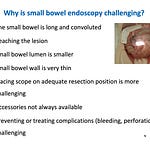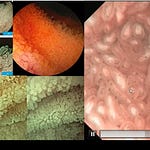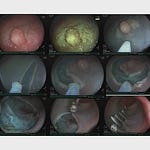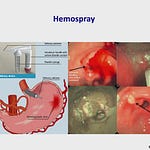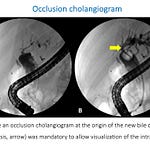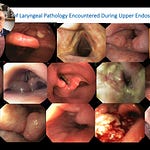👆For non-paid members, the clip above is a free preview. The complete lecture is available to paid members. To see advanced troubleshooting tips, case variations, and a downloadable quick-reference guide based on this video, consider becoming a paid subscriber.
You can subscribe below to watch the full video.
Beyond the Bleed: Unpacking the True Pathophysiology of Heyde Syndrome
You have a patient with recurrent, obscure gastrointestinal bleeding. Endoscopy reveals colonic angiodysplasias. You treat them with Argon Plasma Coagulation (APC), but the bleeding returns. You also note the patient has a history of calcific aortic stenosis. Many clinicians would connect these dots and label it Heyde Syndrome, assuming it’s a simple association. However, this common understanding is incomplete. [1:23]
Heyde syndrome is far more than just aortic stenosis and colonic angiodysplasias. [37:52] It is fundamentally an acquired hemophilic state, where a mechanical heart problem creates a systemic bleeding disorder. [1:19] In this breakdown from Dr. Klaus Mönkemüller, we will explore the surprising history of this syndrome, dive deep into the elegant pathophysiology involving shear stress and von Willebrand factor, and review the modern multidisciplinary approach to management.
From Clinical Observation to a Coagulation Disorder
The “Old” Definition
The story begins not with a gastroenterologist, but with a general practitioner. [2:11] In 1953, Dr. E. C. Heyde wrote a letter to the New England Journal of Medicine describing his observation of elderly patients with calcific aortic stenosis who suffered from massive gastrointestinal bleeding. [2:00] Interestingly, his original letter made no mention of angiodysplasia or arteriovenous malformations (AVMs). [3:07] The initial definition was simply obscure GI bleeding in the presence of aortic stenosis. [2:57]
Later studies solidified this connection. One key paper reviewed 91 patients with aortic stenosis and recurrent, unexplained GI bleeding between 1955 and 1975. [3:55] The crucial finding was that among the patients who underwent aortic valve replacement and survived the surgery, the bleeding stopped. [4:24] This strongly suggested a causal relationship: fixing the valve fixed the bleeding.
The Modern Triad: A More Complete Picture
Over time, our understanding evolved into the modern Heyde’s syndrome triad: [13:51]
Aortic Stenosis (AS)
Gastrointestinal (GI) Bleeding (often from angiodysplasias, but not exclusively)
Acquired von Willebrand Syndrome (aVWS)
The development of aVWS is the central link between the mechanical heart valve issue and the systemic bleeding tendency. [7:16] This is not just an association; it’s a direct consequence.
To see the detailed molecular mechanism, the role of angiogenesis, and a review of modern management strategies based on this video, consider becoming a paid subscriber.
The Core Mechanism: How Shear Stress Destroys a Key Clotting Factor
Listen to this episode with a 7-day free trial
Subscribe to EndoCollab to listen to this post and get 7 days of free access to the full post archives.


